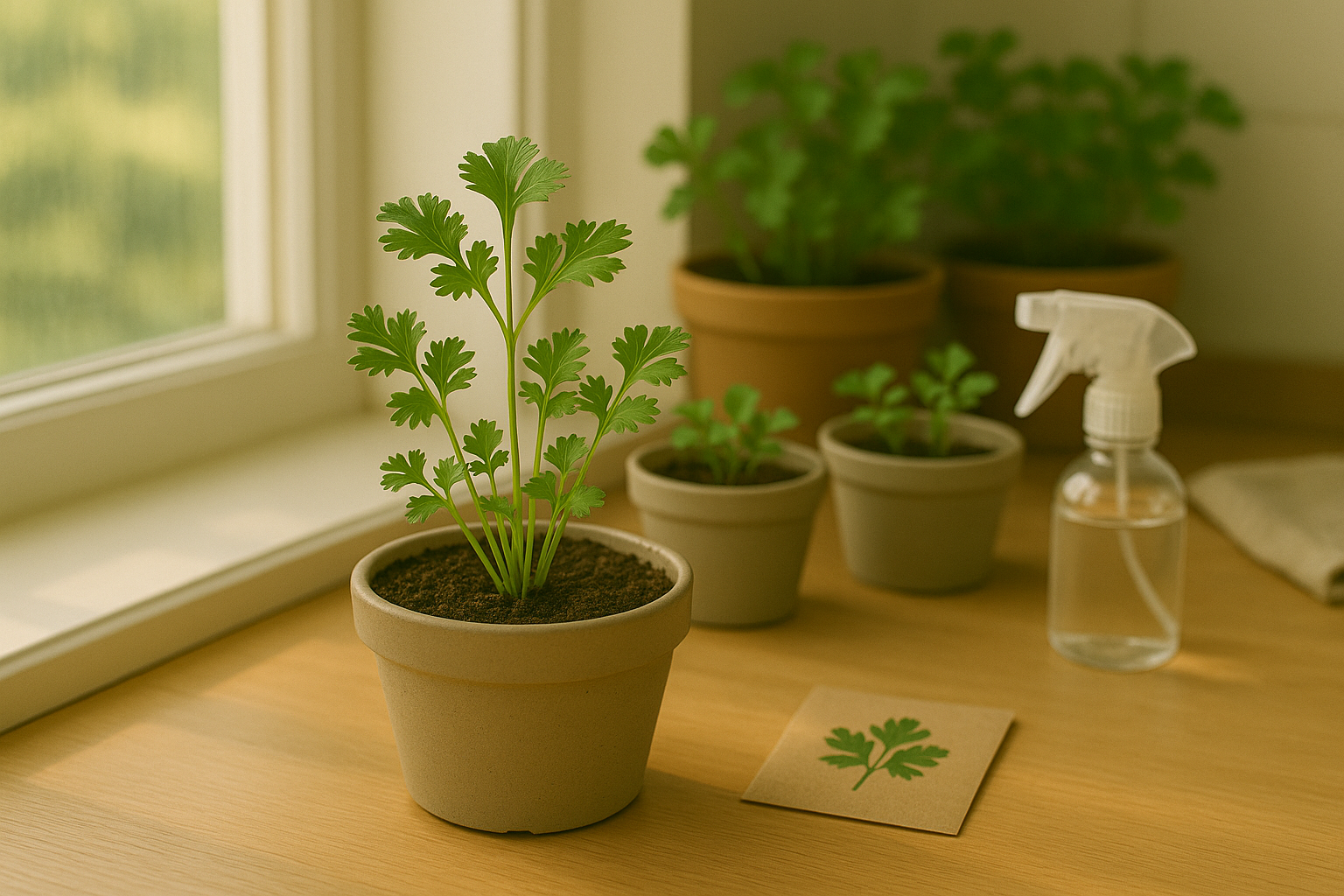Introduction
Starting cilantro indoors is a rewarding way to enjoy this popular herb fresh, even if you don’t have garden space outside. Cilantro, with its bright, citrusy flavor, is a staple in everything from salsas to curries, and having it on hand can transform your homemade meals.
Growing cilantro from seed indoors not only ensures a steady supply year-round but also gives you control over the growing conditions, leading to healthier, more flavorful plants. Plus, starting from seed helps reduce the risk of transplant shock that often affects store-bought seedlings.
In this article, you’ll find a simple, step-by-step guide to starting cilantro seeds indoors—from choosing containers and soil to providing the right light and moisture. Whether you’re a first-time gardener or a seasoned herb enthusiast, you’ll discover practical tips to boost your indoor cilantro harvest and keep your kitchen stocked with fresh greens.
Gathering Supplies & Understanding Cilantro
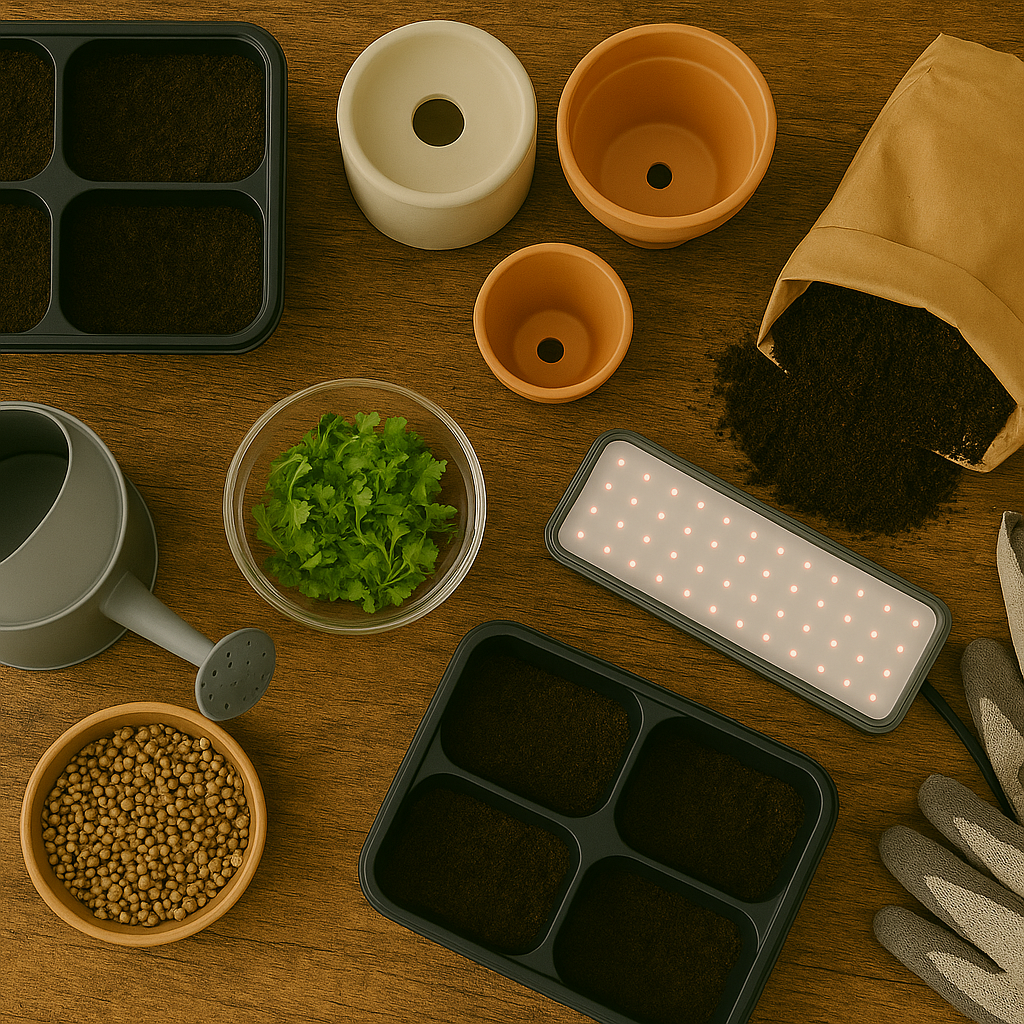
Before you start growing cilantro indoors, it’s important to gather all the right supplies to set yourself up for success. Begin with fresh cilantro seeds, which you can find at most garden centers or online. Choose containers that are at least 8 inches deep with good drainage holes—cilantro’s roots grow long and need room.
Next, select a high-quality potting soil; cilantro prefers a light, well-draining mix rather than heavy garden soil. Indoor lighting is crucial since cilantro thrives with at least 4-6 hours of bright light daily. If your windows don’t get enough sunshine, invest in an affordable LED grow light to keep your crop happy.
Lastly, keep a watering can or spray bottle handy, as cilantro likes consistent moisture but doesn’t want to be waterlogged.
Understanding Cilantro’s Growth
Cilantro matures quickly and can “bolt,” or go to seed, when exposed to heat or inconsistent watering, which leads to bitter leaves. To prevent this, keep temperatures around 60–70°F and pick leaves frequently, which encourages bushier growth.
Unlike many herbs, cilantro has a relatively short life cycle, so consider sowing new seeds every few weeks for a continual harvest. Indoor environments sometimes lack the airflow of outdoor gardens, so watch for signs of mildew and space your plants to improve circulation.
With the right supplies and a little attention, you’ll enjoy fresh, flavorful cilantro from your own kitchen windowsill.
Preparing & Sowing Cilantro Seeds
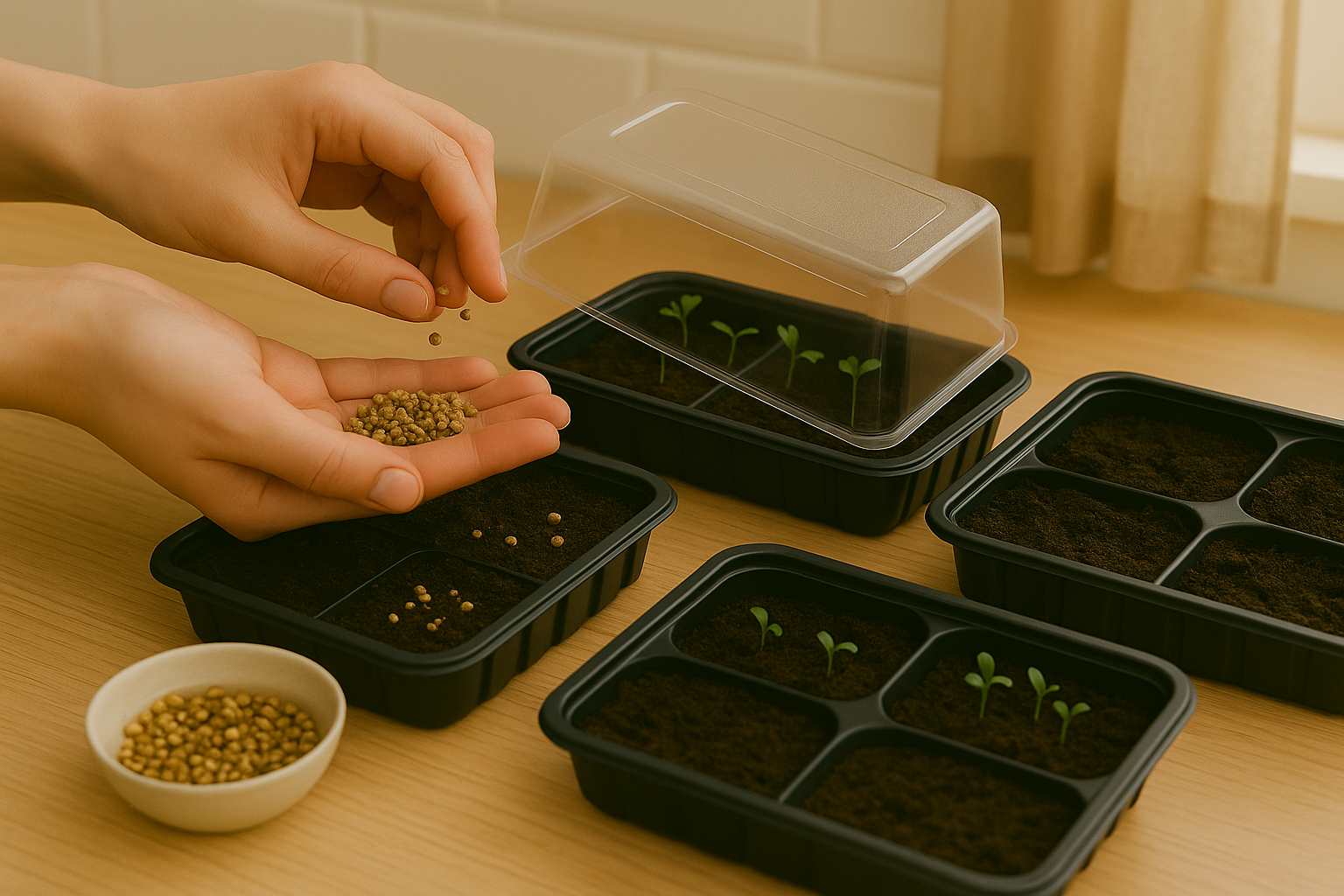
To get the best results from your cilantro seeds, a little preparation goes a long way. Start by gently crushing the seeds between your fingers—each “seed” is actually two fused together, and splitting them improves germination rates. Soaking the seeds overnight in lukewarm water softens their hard coat and speeds up sprouting.
For soil, choose a light, well-draining potting mix rich in organic matter; cilantro doesn’t like heavy, compacted soil. Fill small pots or seed-starting trays with soil and lightly moisten it before planting.
Sow the seeds about a quarter-inch (0.5–1 cm) deep and space them one to two inches (2–5 cm) apart to give each plant room to grow. After covering with soil, mist gently with water to keep the surface moist but not soggy.
Place the pots in a bright spot, such as a sunny windowsill, but avoid direct, intense midday sun that can dry the soil quickly. Cilantro seeds germinate best at temperatures between 60°F and 75°F (16°C–24°C)—a bit cooler than many herbs prefer, so don’t worry if your space isn’t tropical.
Use a humidity dome or loosely draped plastic wrap to retain moisture until the seeds sprout, usually in 7–14 days. Check daily, making sure the soil stays damp but never waterlogged.
Once seedlings emerge, remove the cover and thin them out if needed, ensuring good airflow. Remember, cilantro has a long taproot and doesn’t like to be transplanted, so sow seeds in their final container if possible.
This focused attention at the very start sets the stage for lush, healthy cilantro ready to harvest in just a few weeks.
Caring for Cilantro Seedlings Indoors
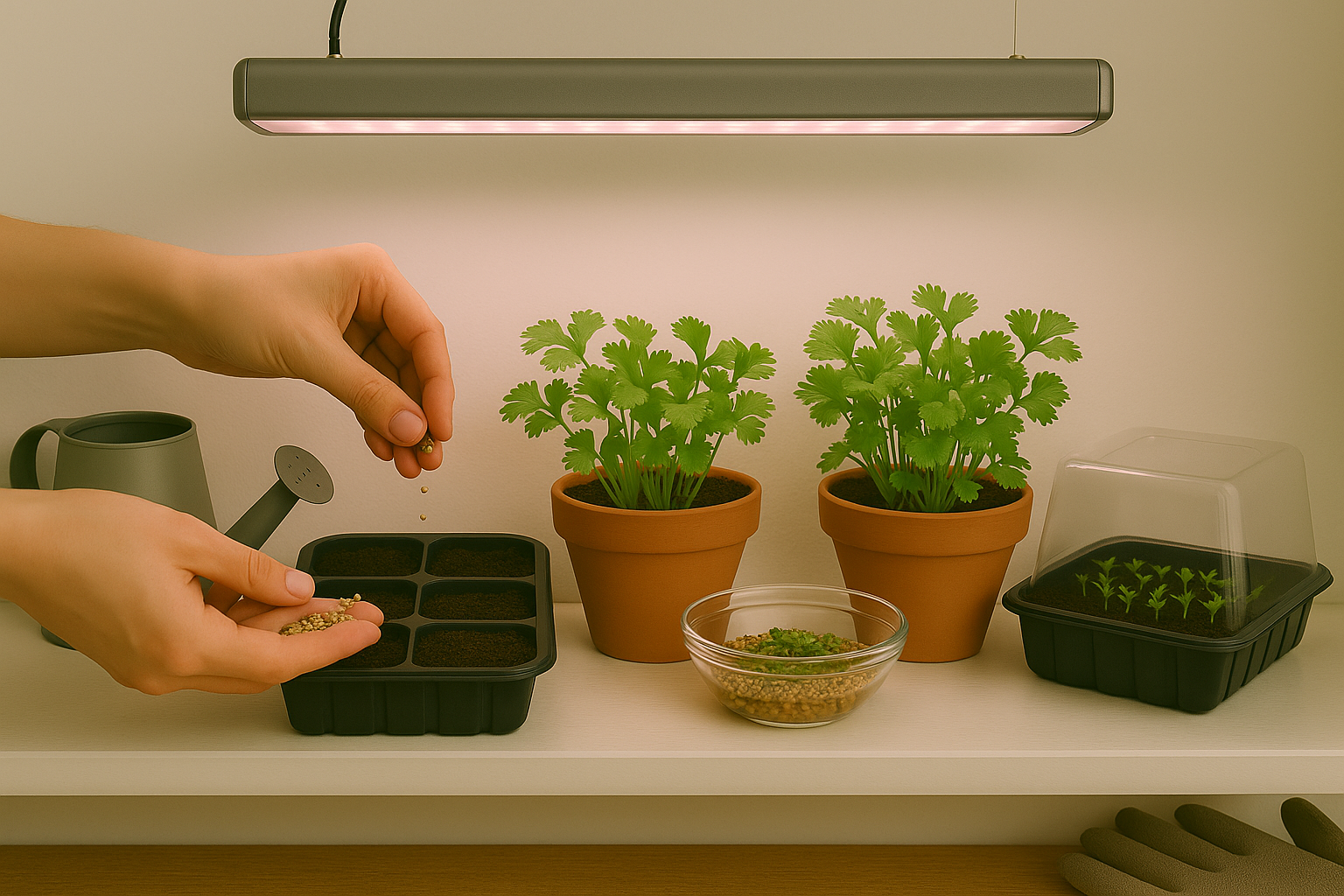
Caring for cilantro seedlings indoors starts with ensuring they get enough light—these sun-loving herbs need plenty of direct sunlight to thrive. If you have a south-facing windowsill, place seedlings there for at least six hours of sunlight a day, rotating the container regularly so stems grow straight instead of leaning toward the light.
If you have less natural light, consider using a small grow light set about two to four inches above the seedlings. This helps keep growth compact and prevents legginess.
Watering cilantro seedlings requires a gentle touch; keep the surface moist but not soggy. Stick your finger into the soil—if the top half-inch feels dry, it’s time to water. Use a spray bottle or a soft-spout watering can to avoid disturbing the delicate roots.
Thinning and Spacing
Thinning is essential once the seedlings reach about two inches tall. Snip the weakest ones at the soil line, keeping just one healthy seedling every two inches. This gives each plant enough space to develop strong roots and foliage.
Fertilizing
Fertilizing cilantro seedlings is about balance: apply half-strength liquid fertilizer every other week. Over-fertilizing can cause weak, leggy growth, so less is more.
Temperature and Humidity
Cilantro prefers cooler temperatures, ideally between 60–75°F, and moderate humidity. Avoid placing seedlings near hot radiators or drafty windows. To increase humidity, place a shallow tray of water nearby or cover seedlings briefly with a clear plastic dome until they develop true leaves.
Common Mistakes to Avoid
- Overwatering, which leads to root rot
- Letting seedlings dry out completely, causing stress
- Fertilizing too soon or too heavily
- Crowding the container—thin seedlings early and ruthlessly
By following these tips, you can grow strong, healthy cilantro seedlings ready for transplant or harvest.
Troubleshooting
Growing cilantro indoors is rewarding, but you might run into some common problems along the way. If your seedlings look leggy or weak, they’re probably craving more light—place them near a sunny window or use a grow light to give them a boost.
Yellowing leaves often signal overwatering or poor drainage, so let the soil dry slightly between waterings and make sure your pot has holes. To prevent these issues, use a well-draining potting mix and avoid crowding your plants, as poor airflow can attract fungal diseases.
Indoor cilantro can suffer from pests like aphids or spider mites—wipe leaves with a damp cloth or use insecticidal soap if you spot any. Keep an eye out for white, powdery patches that indicate mildew; improve ventilation and remove affected leaves promptly.
Bolting, when cilantro suddenly grows tall and flowers, is another common challenge—this happens in response to heat or stress. Keep your plant cool and harvest leaves regularly to delay flowering.
With these tips—adequate light, careful watering, pest monitoring, and regular harvests—you can grow healthy, flavorful cilantro indoors year-round.
Harvesting & Using Indoor-Grown Cilantro
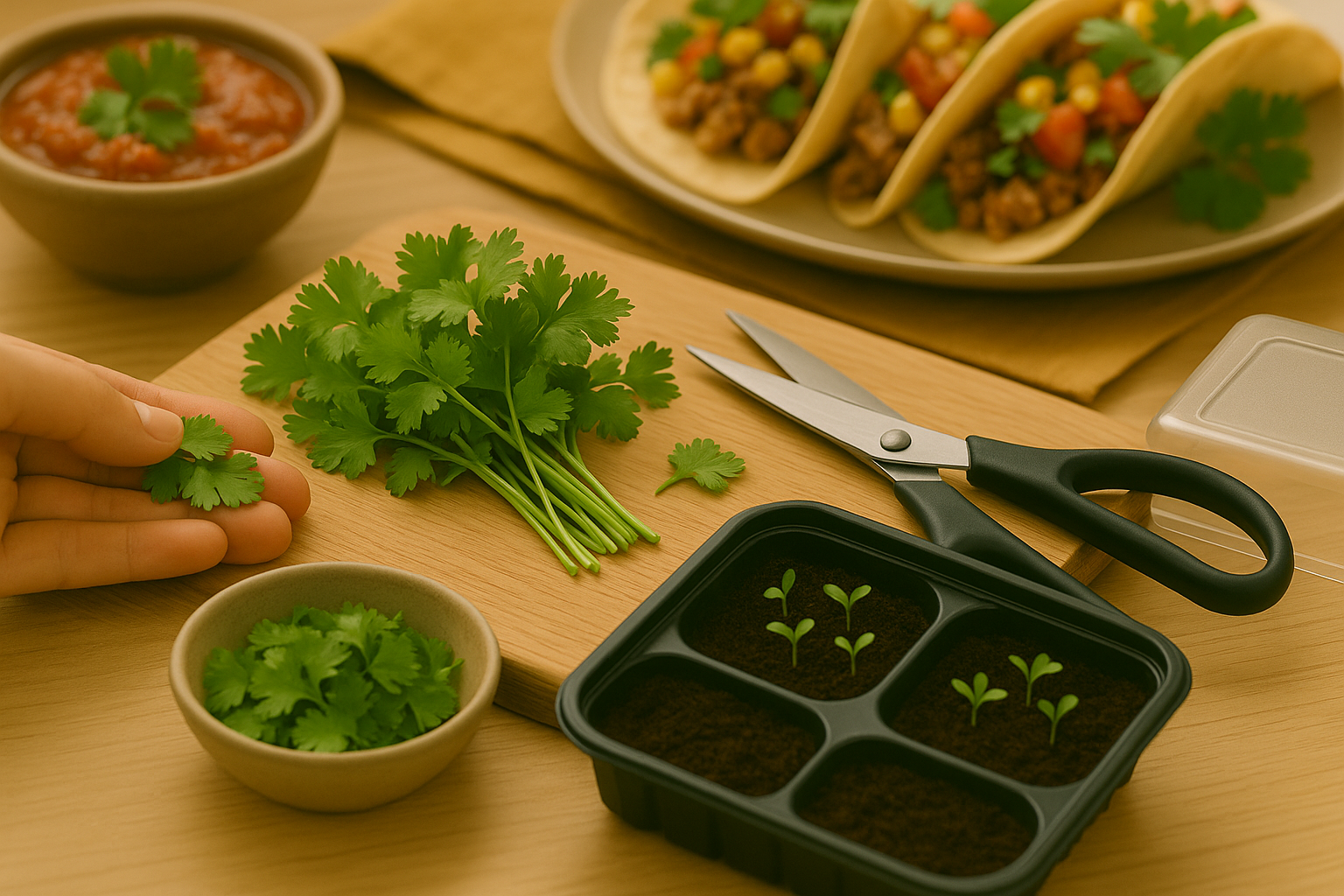
Knowing the right time to harvest cilantro is key to keeping your indoor garden productive for weeks. Start snipping leaves once your cilantro reaches about 6 inches tall and has plenty of leafy growth—usually three to four weeks after planting.
For the longest harvest window, never cut more than one-third of the plant at a time. Use clean scissors or kitchen shears to snip outer stems about one inch above the soil, leaving the center foliage intact; this allows new leaves to keep growing from the middle. Avoid pulling or tearing the stems, as this can stress the plant and slow regrowth.
For the best flavor and texture, harvest in the morning when leaves are most hydrated. Don’t let your cilantro flower too early—regular trimming not only gives you more to use, but it also keeps your plant from bolting.
Fresh-cut cilantro is a kitchen all-star:
- Toss it over tacos
- Stir it into salsas
- Sprinkle on soups
- Blend into homemade dressings for a pop of herbal brightness
It’s also great for last-minute garnishes—simply chop and scatter over curries, roasted veggies, or even scrambled eggs. Freezing extra leaves in olive oil or water (using an ice cube tray) makes it easy to savor your harvest in cooked dishes later on.
With the right harvesting approach and a little creativity in the kitchen, your indoor-grown cilantro can stay lush, flavorful, and endlessly useful.
Final Tips for Success & FAQs
Growing cilantro indoors can be both rewarding and fun, especially when you follow a few best practices. Start by choosing a shallow container with good drainage and use a quality potting mix to provide your plants with the nutrients they need.
Place your cilantro in a sunny window where it gets at least 4–6 hours of direct sunlight each day, or supplement with a grow light if natural light is limited. Water when the soil feels dry to the touch, but avoid overwatering, which can cause root rot.
To keep your cilantro producing fresh leaves, snip the outer stems regularly and pinch off any flower buds that start to form. New growers often ask if cilantro regrows after cutting—yes, as long as you don’t cut more than a third of the plant at a time.
Another common question is about bolting; cilantro bolts quickly in heat, so keep it cool and harvest often. If your plant looks leggy, try moving it to a brighter spot. Remember, every growing space is different, so don’t be afraid to experiment with light, watering frequency, and even container types.
Most importantly, enjoy the process and celebrate every bunch of fragrant cilantro you harvest fresh from your own windowsill.
